Aug. 1, 2014:
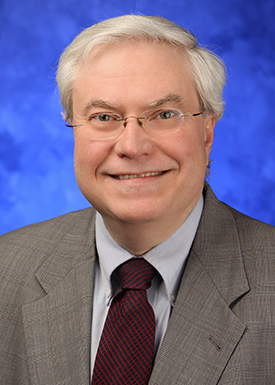 A conversation with Raymond J. Hohl, MD, PhD, director of Penn State Hershey Cancer Institute, which is a member of the Big Ten Cancer Research Consortium. Dr. Hohl joined Penn State Hershey from the Holden Comprehensive Cancer Center, University of Iowa, where he held the Holden Family Chair/associate chair of the Department of Internal Medicine, as well as associate director for clinical and translational research. At Penn State, he will hold academic appointments as professor in the departments of Medicine and Pharmacology.
A conversation with Raymond J. Hohl, MD, PhD, director of Penn State Hershey Cancer Institute, which is a member of the Big Ten Cancer Research Consortium. Dr. Hohl joined Penn State Hershey from the Holden Comprehensive Cancer Center, University of Iowa, where he held the Holden Family Chair/associate chair of the Department of Internal Medicine, as well as associate director for clinical and translational research. At Penn State, he will hold academic appointments as professor in the departments of Medicine and Pharmacology.
Q: What kind of impact do you see the Big Ten Cancer Research Consortium having on cancer clinical trials?
The Big Ten Cancer Research Consortium allows investigators from Penn State Hershey Cancer Institute and the other Big Ten institutions to more rapidly advance their concepts to active clinic trials. Because the trials will be developed and performed by a more tightly knit group of like-minded investigators, it is expected that the time from idea to completion of the trial will be substantially shortened as compared to the national clinical trials network’s current approach. For the principal investigators, this will mean more rapid advancement of their careers. For our patients with cancer, this will result in even more therapies and treatment options.
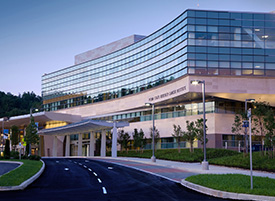 Q: What are some of the strengths Penn State Hershey Cancer Institute brings to the consortium?
Q: What are some of the strengths Penn State Hershey Cancer Institute brings to the consortium?
Penn State Hershey Cancer Institute historically and currently has a very strong drug discovery and development program which I see to be strengthened further in the near future. We have expertise in carcinogenesis and chemoprevention, and outstanding pre-clinical and early clinical studies being performed by Drs. Karam El-Bayoumy and Jeffrey Peters. Through these studies, we have strong linkage of our medical campus in Hershey to our main campus in State College, Pennsylvania. We also have a very strong virology group led by Dr. Craig Meyers that is focused on variances in human papilloma virus subtypes in a rural population and predilection to many cancers. Additionally, we have unique populations of subjects and patients that, for example, represent the large college/student-age patients in State College and those living in rural Appalachia as well as underserved minorities in Harrisburg.
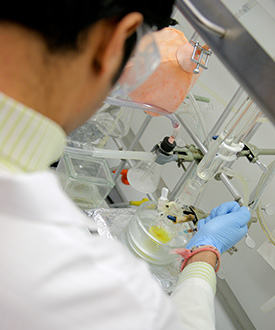 The Cancer Institute’s emphasis on rural, underserved populations is a key focus. We have leveraged existing program components and research initiatives to create a comprehensive cancer research network and referral base. The network serves as a foundation for all future clinical and population-based research, with emphasis on recruitment from rural central Pennsylvania to cancer treatment and prevention clinical trials.
The Cancer Institute’s emphasis on rural, underserved populations is a key focus. We have leveraged existing program components and research initiatives to create a comprehensive cancer research network and referral base. The network serves as a foundation for all future clinical and population-based research, with emphasis on recruitment from rural central Pennsylvania to cancer treatment and prevention clinical trials.
Q: What kind of scientific advances happening at Penn State Hershey Cancer Institute are changing the way we diagnose and treat cancer?
Advances are rapidly being developed at Penn State Hershey Cancer Institute.
Earlier this year, Dr. Ed Gunther had a key paper published in Nature that alters the way we think about breast cancer carcinogenesis. This work has the potential to alter how we think about breast cancer therapies. Dr. Gavin Robertson has many basic ongoing studies that target malignant melanoma — one of which has led to the advancement of a compound, leelamine, as a novel agent to block cholesterol transported in cancer cells. This work was recently published in Molecular Cancer Therapeutics.
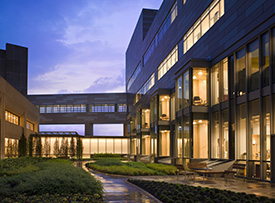 The Cancer Institute also has widely recognized expertise in thoracic oncology as evidenced by the program led by Dr. Chandra Belani, work in gastrointestinal malignancies led by Dr. Wafik El-Deiry, and long-standing strengths in developing novel therapies for hematologic malignancies. Within the hematologic malignancies program, Dr. David Claxton has developed a large and well characterized bank of cryopreserved AML specimens. This resource enables the laboratory study of viable leukemia specimens from patients and notably may allow repeated interrogation of identical aliquots given the large number available. My own research program is advancing a lead from the family of compounds called schweinfurthins for the treatment of glioblastomas.
The Cancer Institute also has widely recognized expertise in thoracic oncology as evidenced by the program led by Dr. Chandra Belani, work in gastrointestinal malignancies led by Dr. Wafik El-Deiry, and long-standing strengths in developing novel therapies for hematologic malignancies. Within the hematologic malignancies program, Dr. David Claxton has developed a large and well characterized bank of cryopreserved AML specimens. This resource enables the laboratory study of viable leukemia specimens from patients and notably may allow repeated interrogation of identical aliquots given the large number available. My own research program is advancing a lead from the family of compounds called schweinfurthins for the treatment of glioblastomas.
Q: How will being a part of the Big Ten CRC differ from other collaborative efforts of which your center has been a part?
Thus far, the majority of the collaborative efforts that the Cancer Institute has participated in are the result of very specific interactions that developed from long-standing mutual interests. Participating in the Big Ten Cancer Research Consortium affords the opportunity to have new collaborations and develop in areas that might not have been obvious to investigators at our institution and other Big Ten institutions. The Big Ten Cancer Research Consortium has regular conference calls that include leaders from each of the Big Ten institutions with specific disease interests. These calls and interactions will result in new programs and trials.
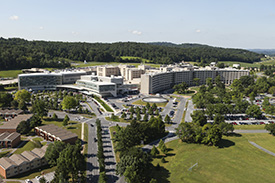 We are a growing cancer center. We have several new faculty members, many of them junior, with plans for further recruitment in the coming months and years. We are most excited that when they join they will not only benefit from clinical investigators in our facility, but also engagement and collaboration with scientists and clinicians at all Big Ten institutions.
We are a growing cancer center. We have several new faculty members, many of them junior, with plans for further recruitment in the coming months and years. We are most excited that when they join they will not only benefit from clinical investigators in our facility, but also engagement and collaboration with scientists and clinicians at all Big Ten institutions.
About the Big Ten Cancer Research Consortium: The Big Ten Cancer Research Consortium creates a unique team-research culture to drive science rapidly from ideas to treatment-changing paradigms. Within this innovative environment, today’s research leaders collaborate with and mentor the research leaders of tomorrow with the unified goal of improving the lives of all patients with cancer.
About the Big Ten Conference: The Big Ten Conference is an association of world-class universities whose member institutions share a common mission of research, graduate, professional and undergraduate teaching and public service. Founded in 1896, the Big Ten has sustained a comprehensive set of shared practices and policies that enforce the priority of academics in student-athletes’ lives and emphasize the values of integrity, fairness and competitiveness. The broad-based athletic programs of the 12 Big Ten institutions provide in excess of $141 million in direct financial aid to more than 8,200 student-athletes playing on more than 300 teams in 43 different sports. The Big Ten sponsors 26 official conference sports, 13 for men and 13 for women, and will add men’s and women’s lacrosse as the 27th and 28th official sports for the 2014-15 academic year. For more information, visit www.bigten.org.














Subscribe to the Big Ten CRC Newsletter X
X Facebook
Facebook YouTube
YouTube